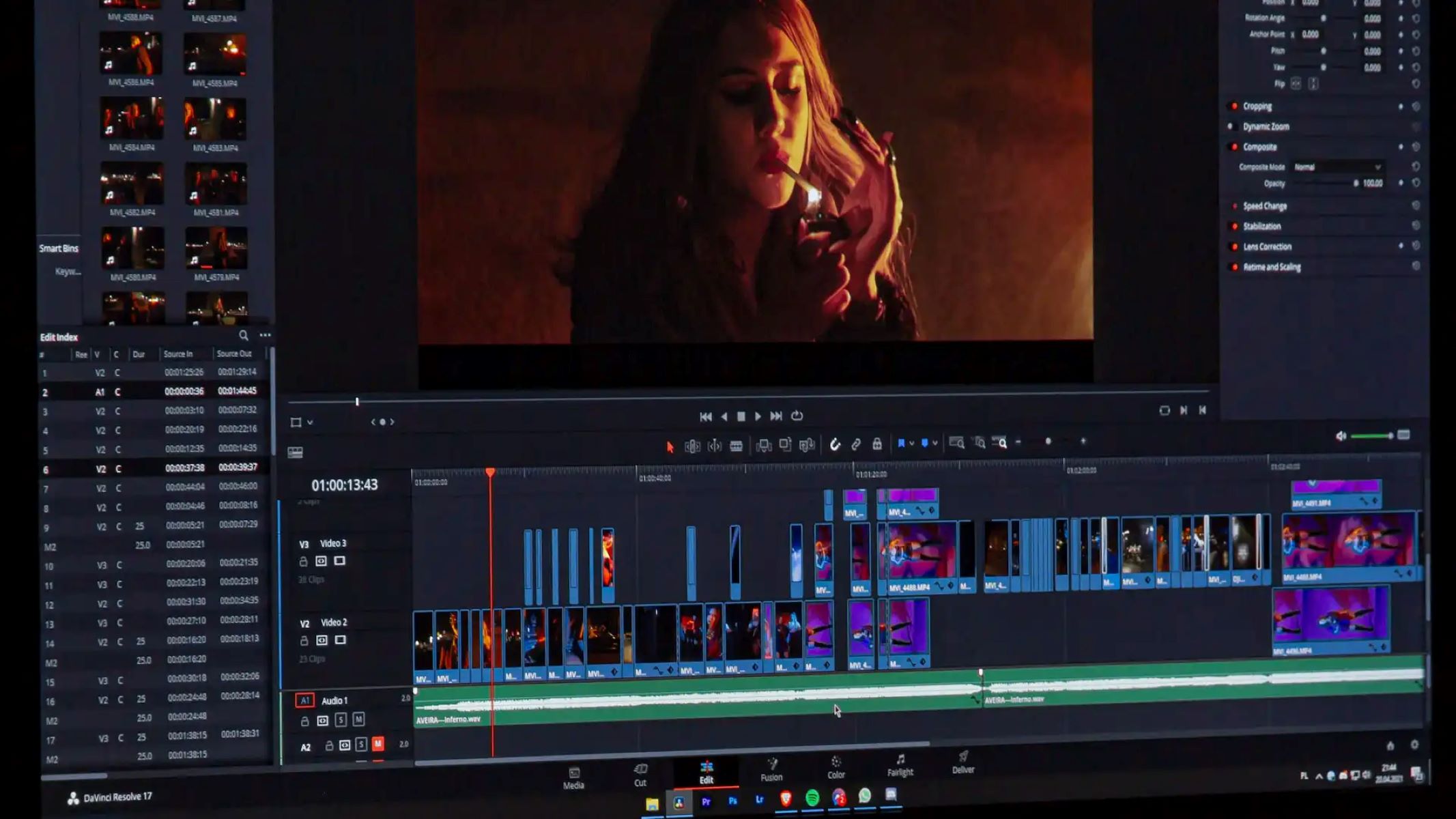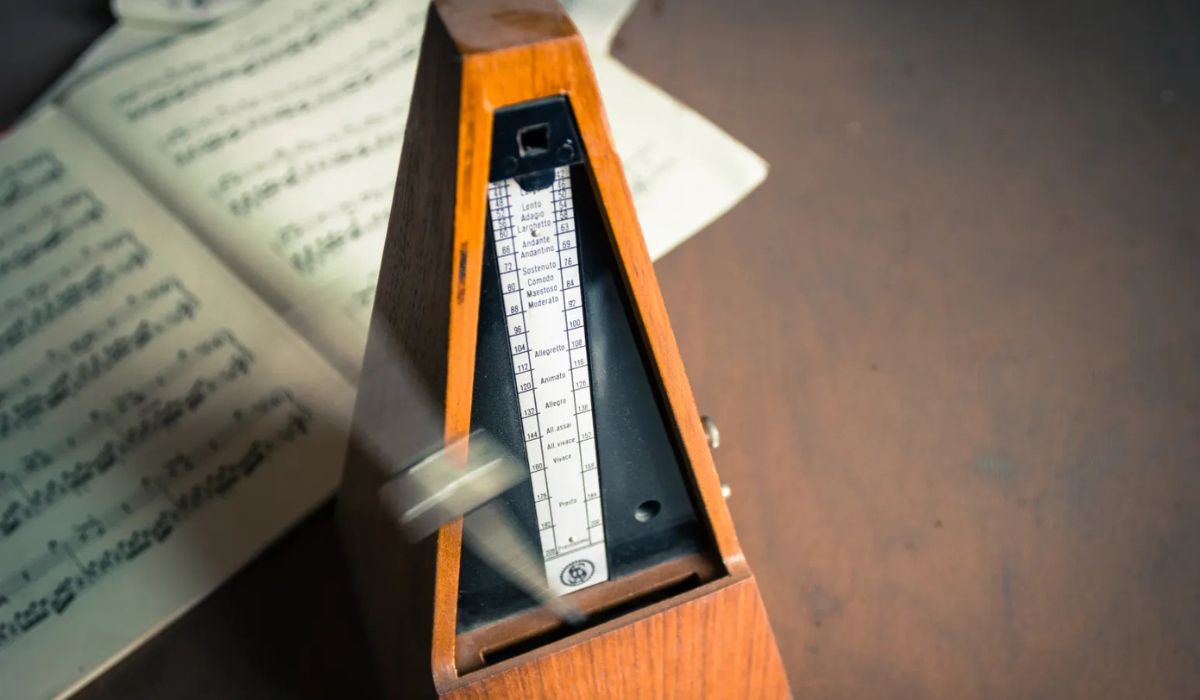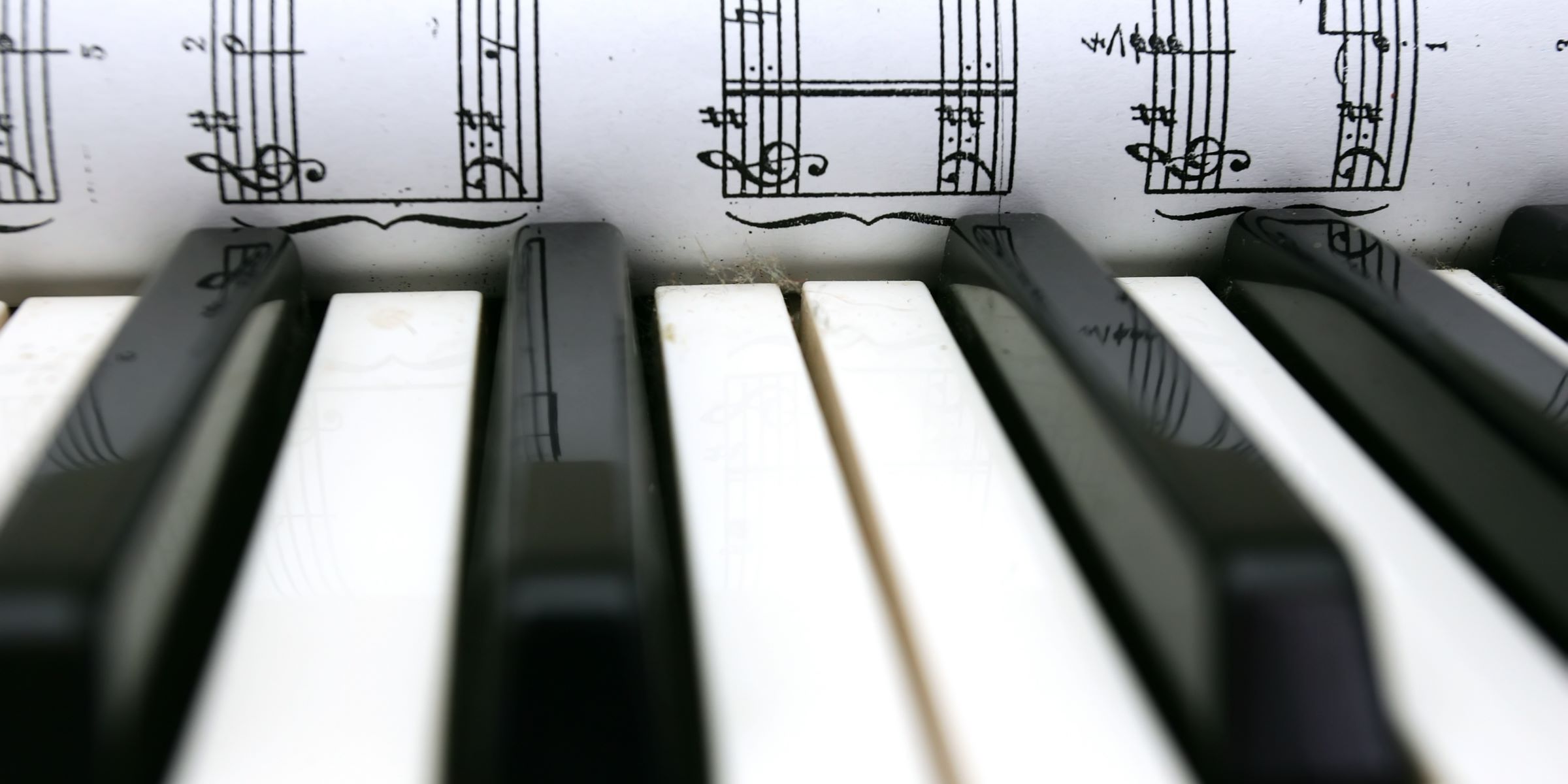Home>Production & Technology>Background Music>Why Do We Use Background Music For Theatre Play


Background Music
Why Do We Use Background Music For Theatre Play
Modified: February 24, 2024
Discover the importance of background music in theatre plays and learn why it enhances the overall experience. Explore the role and impact of background music in creating emotions and setting the stage.
(Many of the links in this article redirect to a specific reviewed product. Your purchase of these products through affiliate links helps to generate commission for AudioLover.com, at no extra cost. Learn more)
Table of Contents
- Introduction
- Historical Background of Background Music in Theatre
- Purpose and Effects of Background Music in Theatre
- Creating Atmosphere and Setting the Tone
- Enhancing Emotional Impact
- Signaling Transitions and Scene Changes
- Reinforcing Themes and Motifs
- Collaboration between Composer and Director
- Choosing the Right Background Music
- Sound Design and Technical Considerations
- Criticisms and Controversies Surrounding Background Music in Theatre
- Conclusion
Introduction
Background music has long been an integral part of theatre productions, playing a significant role in enhancing the overall experience for both actors and audience members. From dramatic plays to musicals, the strategic use of carefully selected music can elevate the storytelling, evoke emotions, and create a captivating atmosphere.
Theatre is a unique art form that combines various elements, including acting, set design, lighting, and sound. Background music serves as another layer in this creative tapestry, adding depth and texture to the performance. It has the power to transport the audience to different time periods, evoke specific moods, and heighten the dramatic impact of a scene.
Throughout history, background music in theatre has evolved and adapted to reflect changing trends and artistic styles. From ancient Greek tragedies accompanied by live musicians, to the emergence of musical theatre in the 20th century, composers and directors have used music as a tool to enhance the narrative and engage the audience on a deeper level.
This article will explore the historical background of background music in theatre, the purpose and effects it has on performances, the collaboration between composers and directors, the technical considerations in sound design, and the criticisms and controversies that surround its use. By the end, you will have a comprehensive understanding of why background music is an essential component of the theatrical experience.
Historical Background of Background Music in Theatre
The use of background music in theatre can be traced back thousands of years to ancient civilizations. In ancient Greece, for example, theatre productions were accompanied by live music performed by musicians known as “aulētai.” These musicians would play instruments such as the aulos, lyre, and percussion instruments to add an extra dimension to the performance and enhance the audience’s emotional engagement.
In medieval European theatre, a similar practice emerged, with minstrels and troubadours providing musical accompaniment to plays and performances. These musicians would play instruments like the lute, harp, and flute, setting the mood and accentuating the actions and emotions of the actors on stage.
During the Renaissance, the popularity of theatre continued to grow, and background music became more sophisticated. Composers such as William Shakespeare’s contemporary, Thomas Morley, composed intricate and melodic pieces specifically for theatre productions. These musical interludes not only added ambiance but also signaled transitions between scenes and heightened the emotional impact of the storytelling.
By the 19th century, with the rise of romanticism and the advent of operas and musical theatre, background music became an integral part of the theatrical experience. Composers like Richard Wagner revolutionized the use of music in drama, composing intricate scores that seamlessly integrated with the narrative and heightened the emotional intensity of the performances.
In the 20th century, the use of background music in theatre continued to evolve. With the advent of technology, recorded music became more accessible, and sound design capabilities expanded. Composers and directors started to experiment with different genres and styles of music, incorporating popular songs, classical compositions, and original scores to enhance the storytelling.
Today, background music in theatre has reached new heights of complexity and creativity. Composers collaborate closely with directors and sound designers to create immersive soundscapes that perfectly complement the visuals and performances on stage. Whether it’s a haunting melody, a bombastic orchestral score, or a subtle ambient sound, background music continues to play a vital role in engaging and captivating audiences in the world of the theatre.
Purpose and Effects of Background Music in Theatre
The use of background music in theatre serves multiple purposes and has a range of effects on the overall theatrical experience. Understanding these purposes and effects is essential in appreciating the significance of music in enhancing the storytelling and engaging the audience.
One primary purpose of background music in theatre is to create atmosphere and set the tone for the performance. From the moment the audience enters the theater, the music playing in the background can convey a sense of anticipation, excitement, or foreboding. It helps establish the mood and prepare the audience for what is to come, setting the stage for the unfolding story.
Background music also plays a crucial role in enhancing the emotional impact of a scene. Through carefully chosen melodies, harmonies, and rhythms, music has the power to evoke specific emotions in the audience. A tender love scene can be further intensified by a gentle, romantic melody, while a high-stakes action sequence can be heightened by a dramatic and intense score. By tapping into the emotional resonance of music, theatre artists can elicit powerful responses from the audience.
Another purpose of background music is to signal transitions and scene changes within a theatrical production. Whether it’s a quick montage or a significant shift in time or location, music can serve as a bridge, guiding the audience seamlessly from one moment to the next. It helps maintain the flow of the narrative and minimizes any potential confusion or disruptions.
Background music also reinforces themes and motifs in a theatre production. Composers often incorporate leitmotifs, recurring musical themes associated with specific characters, objects, or ideas. These musical motifs help reinforce the underlying themes of the play and create a cohesive musical tapestry that ties the various elements of the production together.
The collaboration between the composer and the director is crucial in achieving these desired effects. The composer must understand the director’s vision and intentions for the play and translate them into musical compositions that enhance the storytelling. This collaboration ensures that the music seamlessly integrates with the acting, set design, and other elements of the production, creating a harmonious and immersive experience for the audience.
Overall, the purpose and effects of background music in theatre are vast and varied. From creating atmosphere and setting the tone, to enhancing emotional impact, signaling transitions, and reinforcing themes, background music is a powerful tool in the theatrical arsenal. It adds depth, emotion, and a layer of artistry that captivates and engages audiences, elevating the overall theatrical experience.
Creating Atmosphere and Setting the Tone
One of the key roles of background music in theatre is to create a specific atmosphere and set the tone for the performance. Just as a carefully chosen color palette can shape the mood of a painting, the right musical accompaniment can significantly impact the audience’s emotional experience and perception of a play.
Through the use of different musical elements such as tempo, dynamics, and instrumentation, theatre artists can create a wide range of atmospheres. For example, a slow, melancholic melody played on a solo piano can evoke a sense of melancholy or introspection, setting a somber tone for a tragic play. On the other hand, an upbeat, lively tune played by a full orchestra can create a sense of excitement and anticipation, setting the stage for a comedic or energetic performance.
The choice of musical style and genre also plays a crucial role in creating atmosphere and setting the tone. For instance, a hauntingly beautiful piece of classical music may be used to create an air of elegance and sophistication, enhancing the atmosphere of a period drama. In contrast, a pulsating electronic score may be employed to create a tense and suspenseful atmosphere, heightening the anticipation for a thrilling mystery or suspenseful play.
Additionally, sound design techniques such as the use of ambient sounds or sound effects can further enhance the creation of atmosphere. The subtle sound of rain, birds chirping, or distant city noises can transport the audience into a specific location, helping to establish the setting and immerse them in the world of the play.
The combination of music, sound, and other theatrical elements work together to create a cohesive and immersive atmosphere. The lighting design, set, and costumes all contribute to the overall ambiance of the production. When these elements align with the background music, a powerful synergy is created, further enhancing the audience’s emotional connection to the performance.
Ultimately, creating atmosphere and setting the tone through background music is a delicate balance that requires careful consideration of the director’s vision, the script, and the emotional journey of the characters. The right combination of musical elements can transport the audience into the world of the play, capturing their attention and setting the stage for a mesmerizing theatrical experience.
Enhancing Emotional Impact
Background music in theatre has a profound impact on the emotional experience of the audience. Through the strategic use of melodies, harmonies, and rhythms, composers and directors can amplify the emotional intensity of a scene, bringing the audience closer to the characters and their journeys.
One of the primary ways that background music enhances emotional impact is by creating a sympathetic connection between the audience and the characters on stage. By selecting music that reflects the emotions being portrayed, the audience can more easily empathize and relate to the characters’ experiences. For example, a swelling and triumphant orchestral score can evoke feelings of triumph and victory during a climactic moment, eliciting a sense of joy and celebration from the audience.
Additionally, background music can intensify the emotional dynamics within a scene. A tender love scene accompanied by a soft and romantic melody can heighten the audience’s sense of romance and passion. Conversely, a dissonant and unsettling score can create a sense of unease and tension during a suspenseful moment, leaving the audience on the edge of their seats.
Another way that background music enhances emotional impact is through the use of leitmotifs or recurring musical themes associated with specific characters or themes. These musical motifs serve as emotional anchors, instantly evoking the audience’s familiarity with a particular character or situation. By repeatedly using these motifs, composers can deepen the emotional connection between the audience and the story, amplifying the impact of pivotal moments.
Furthermore, background music can help to pace and structure the emotional journey of a play. It can provide cues for emotional shifts, whether it’s a sudden shift from a lighthearted scene to a moment of tragedy or a gradual build-up of tension leading to a climactic resolution. The changing dynamics in the music mirror the ebb and flow of emotions on stage, guiding the audience through the emotional arc of the production.
Ultimately, background music serves as a powerful tool in heightening the emotional impact of theatre. It has the ability to evoke a wide range of emotions, from joy and excitement to sadness and fear. By leveraging the emotional power of music, theatre artists can create a more immersive and impactful experience for the audience, leaving a lasting impression long after the final notes fade away.
Signaling Transitions and Scene Changes
Background music in theatre plays a vital role in signaling transitions and scene changes, helping to maintain the flow and coherence of the overall production. Through the use of musical cues and motifs, composers and directors can guide the audience seamlessly from one scene to the next, minimizing any potential confusion or disruption.
One way that background music accomplishes this is by providing a clear auditory indication of a transition or scene change. For example, a sudden change in musical style, tempo, or instrumentation can signify a shift in time, location, or mood. This audible cue prepares the audience for a new scene and helps them mentally and emotionally transition as well.
In addition to musical cues, background music can also serve as a bridge between scenes, smoothing the transition and maintaining a sense of continuity. By selecting music that shares thematic or tonal elements with the previous scene, composers can create a seamless connection that keeps the audience engaged and immersed in the narrative. This helps to avoid jarring interruptions and maintains a sense of coherence throughout the production.
Background music can also be utilized to create a sense of overlap between scenes, blending the end of one scene with the beginning of the next. By using a gradual fade-out of the previous scene’s music while simultaneously introducing elements of the upcoming scene’s music, a smooth and cohesive transition can be achieved. This technique ensures a seamless progression and allows the audience to follow the flow of the story without any abrupt shifts in atmosphere or tone.
Furthermore, background music can play a crucial role in maintaining momentum during scene changes. A well-selected and appropriately energetic piece of music can help to keep the audience engaged and prevent any lulls or distractions during set changes or shifts in staging. The continuous flow of music helps to maintain a sense of anticipation and excitement, ensuring a seamless and engaging theatrical experience.
Overall, background music’s role in signaling transitions and scene changes is essential in maintaining the coherence and flow of a theatre production. Through the use of musical cues, continuity in motifs, and the creation of overlapping musical elements, composers and directors can facilitate smooth transitions between scenes, keeping the audience fully immersed in the unfolding story.
Reinforcing Themes and Motifs
Background music in theatre plays a significant role in reinforcing themes and motifs present in a production. By strategically incorporating musical elements that align with the underlying themes and motifs of the play, composers and directors enhance the storytelling and deepen the audience’s understanding and emotional connection.
One way that background music reinforces themes and motifs is through the use of leitmotifs. A leitmotif is a recurring musical theme or motif associated with a particular character, object, or idea. By weaving these musical motifs into different scenes throughout the production, composers create a sense of musical cohesion and emphasize the significance of the associated themes or characters. For example, a recurring melody that represents a protagonist or a central idea can resurface during key moments, reminding the audience of its importance and reinforcing its thematic relevance.
In addition to leitmotifs, the overall musical style and genre can also contribute to reinforcing themes and motifs. For example, a production with a historical or cultural theme may incorporate music that reflects the time period or location. By using music from that era or geographical region, the production establishes a sense of authenticity and strengthens the thematic context.
Background music can also complement visual cues on stage to underscore and enhance thematic elements. For example, if a scene portrays a significant change or transformation, the music can mirror this transformation through shifts in tempo, dynamics, or musical textures. By synchronizing the visual and auditory elements, the production reinforces and emphasizes the thematic message, providing a more cohesive and impactful experience for the audience.
Moreover, the lyrics of songs used in musical theatre play a crucial role in reinforcing themes and motifs. Through carefully chosen lyrics, composers and lyricists can directly express and explore the underlying themes and ideas of the production. By paying close attention to the lyrics, the audience gains deeper insight into the characters, conflicts, and overarching messages of the play.
By reinforcing themes and motifs through background music, theatre artists create a multi-layered and cohesive experience for the audience. The repetition and expansion of musical themes and motifs strengthen the emotional impact and intellectual engagement, allowing the audience to connect more deeply with the central ideas and messages conveyed by the production.
Collaboration between Composer and Director
The collaboration between the composer and the director is a crucial aspect of creating effective and impactful background music in theatre. This partnership ensures that the music seamlessly melds with the director’s vision, enhances the storytelling, and elevates the overall theatrical experience for the audience.
At the heart of this collaboration is a shared understanding of the director’s artistic vision and the emotional journey of the play. The director conveys their intentions, desired mood, and thematic elements to the composer, providing them with a blueprint for the musical composition. This collaboration allows the composer to align their musical instincts and expertise with the director’s vision, resulting in a cohesive and harmonious integration of music into the production.
The director may provide the composer with key moments or scenes where they feel music could enhance the emotional impact or create a specific atmosphere. The composer then uses their musical knowledge and creativity to craft melodies, harmonies, and rhythms that resonate with the intended emotional tone. They experiment with different musical styles, instruments, and arrangements to capture the essence of the production.
Throughout the collaborative process, the director and composer continuously communicate and provide feedback to refine and shape the musical elements. They attend rehearsals together, observing how the music interacts with the performances and making adjustments as needed. This iterative approach ensures that the music consistently aligns with the director’s overall artistic vision and serves the storytelling in the most effective way.
The collaboration between the composer and director extends beyond the creation of the music itself. They work closely with the sound design team to ensure that the technical aspects of the music, such as sound levels, transitions, and the integration of live and recorded music, are seamless and enhance the audience’s immersive experience.
Collaboration also involves a mutual understanding and respect for each other’s creative contributions. The composer brings their musical expertise, knowledge of different genres and styles, and ability to evoke emotions through sound. Meanwhile, the director offers their understanding of the dramatic arc, character nuances, and the overall narrative structure. Together, they leverage their respective skills to create a cohesive and powerful theatrical production.
The collaborative process between the composer and the director is dynamic and iterative, allowing for experimentation and exploration. It fosters a space where creative ideas can be exchanged and integrated, resulting in a seamless fusion of music and theatre that enhances the emotional impact and storytelling of the production.
Choosing the Right Background Music
Choosing the right background music for a theatre production is a crucial decision that can significantly impact the overall experience for both performers and audience members. The selection process involves careful consideration of various factors, including the tone of the play, the emotional dynamics of the scenes, and the director’s artistic vision.
One of the key considerations in choosing background music is aligning the musical style with the genre and theme of the play. For example, a period piece set in the 19th century may call for classical compositions or orchestral arrangements that reflect the time period, enhancing the authenticity and immersive nature of the production. Conversely, a contemporary drama may benefit from modern and experimental soundscapes that capture the essence of the story and relate to a contemporary audience.
Another important factor to consider is the emotional impact desired for each scene. Different scenes may require a range of emotions, from joy and excitement to sadness and suspense. The music selected should evoke and amplify the intended emotions, heightening the audience’s engagement and connection to the characters and story. A lively and energetic piece might be suitable for a celebratory moment, while a soft, melancholic melody could enhance a poignant or introspective scene.
Furthermore, the pacing of the play should be taken into account when choosing background music. The music should complement and enhance the rhythm and tempo of the scenes, helping to maintain a sense of momentum and continuity throughout the production. It should seamlessly transition between different moods and intensities, supporting the flow and dramatic arc of the play.
The technical considerations of the theatre space also play a role in selecting background music. The acoustics and sound system capabilities of the venue need to be taken into account to ensure that the music is properly projected and balanced with the actors’ voices. The volume and clarity of the background music should be carefully calibrated to create an immersive experience without overpowering the dialogue or action on stage.
Lastly, collaboration and effective communication between the director and composer are essential in the process of choosing the right background music. The director’s vision and understanding of the play’s themes and characters guide the selection process, while the composer’s expertise in music and sound help bring that vision to life. Working together, they can ensure that the music aligns with the overall artistic vision of the production.
Ultimately, choosing the right background music involves a thoughtful balance of artistic vision, emotional impact, thematic relevance, and technical considerations. When successfully implemented, the music becomes an immersive and integral part of the theatrical experience, heightening the audience’s engagement and amplifying the storytelling on stage.
Sound Design and Technical Considerations
In addition to choosing the right background music, sound design and technical considerations are crucial aspects of creating a seamless and immersive theatrical experience. Sound design encompasses a range of elements, including the placement of speakers, the integration of live and recorded music, and the balance between music, dialogue, and sound effects.
One important consideration is the placement and positioning of speakers within the theatre space. The speakers need to be strategically positioned to ensure proper sound distribution and coverage throughout the audience seating area. This allows the background music to envelop the space, creating a spatially immersive experience for the audience.
The integration of live and recorded music is another key component of sound design. In some productions, live musicians may be present on stage, providing a dynamic and immediate musical accompaniment. It is important to ensure that the live music seamlessly integrates with any pre-recorded tracks, creating a cohesive and balanced sound. The coordination between live musicians and the sound design team is crucial to maintain synchronization and avoid any dissonance or timing issues.
Balance is a critical consideration in sound design. The volume and mix of background music, dialogue, and sound effects should be carefully calibrated to ensure each element is audible and balanced with the others. The background music should enhance the theatrical experience without overpowering or distracting from the actors’ performances or dialogue. Additionally, the sound design team must take into account the acoustics of the theatre space to ensure that the sound is evenly distributed and intelligible to every audience member.
Technical considerations also extend to the seamless execution of sound cues and transitions. Timing is essential in coordinating the music with the action on stage. The sound design team must work closely with the stage manager and performers to ensure smooth transitions between scenes and the accurate execution of audio cues. This coordination ensures that the music enhances the dramatic flow and emotional impact, providing a seamless and engaging experience for the audience.
Additionally, the sound design team must consider the accessibility of the background music. Subtitles or closed captions might be necessary for audience members with hearing impairments to fully engage with the musical elements of the production. By providing accommodations for different audience needs, the sound design team helps ensure an inclusive and enjoyable experience for all theatre-goers.
Overall, sound design is a crucial aspect of theatrical production, including the careful integration of background music. By considering issues such as speaker placement, live music integration, balance, timing, and accessibility, the sound design team ensures that the background music seamlessly enhances the theatrical experience, creating an immersive and memorable performance for the audience.
Criticisms and Controversies Surrounding Background Music in Theatre
While background music has become an integral part of theatre productions, it is not without its share of criticisms and controversies. Some critics argue that background music can be distracting or manipulative, altering the audience’s perception and interfering with the authenticity of the performance.
One criticism is that background music can overpower or overshadow the actors’ performances and dialogue. If the music is too loud or improperly balanced, it can make it difficult for the audience to fully engage with the actors and follow the narrative. This imbalance can diminish the impact of the performances and disrupt the natural rhythm of the play.
Additionally, some argue that background music can manipulate the audience’s emotions and dictate their response to the performance. By using music to guide and influence the viewer’s emotional reactions, some claim that it compromises the individual’s authentic experience and can be seen as an artificial manipulation of their emotions.
The choice of background music can also be a point of controversy. Some productions may opt for recognizable popular songs or well-known classical compositions, which can invoke pre-existing associations and expectations in the audience. While this can be used effectively, critics argue that it can also limit creative choices and constrain the interpretation of the play. Alternatively, original compositions specifically created for the production may be seen as more authentic and innovative.
There are also discussions surrounding the cultural appropriation and authenticity of background music in theatre. If a production incorporates music from a specific cultural or ethnic tradition, questions can arise regarding the respectful representation and accurate portrayal of that culture. It is important for theatre practitioners to approach these choices sensitively and with cultural awareness, aiming to avoid perpetuating stereotypes or misrepresentations.
Lastly, there are concerns about the commercialization and commodification of background music in theatre. Some argue that the use of popular songs or commercially successful music can be driven by marketing strategies instead of artistic choices. This can create a commercialized experience that prioritizes commercial success over artistic integrity.
These criticisms and controversies surrounding background music in theatre highlight the need for thoughtful and intentional choices in its application. The balance between enhancing the theatrical experience and maintaining the authenticity and integrity of the performance is an ongoing dialogue within the theatre community.
Ultimately, the use of background music in theatre should be approached with careful consideration. It should enhance the storytelling, support the emotional journey of the play, and respect the overall artistic vision while maintaining an authentic connection with the audience.
Conclusion
The use of background music in theatre is a powerful tool that enhances the overall impact and emotional experience of a production. Through careful selection and thoughtful integration, background music can create atmosphere, reinforce themes, and guide the audience through the story’s emotional journey. It sets the tone, signals transitions, and deepens the audience’s connection to the characters and narrative.
Throughout history, background music in theatre has evolved and adapted alongside changing artistic styles and technological advancements. Composers and directors have collaborated closely to create seamless and immersive soundscapes, utilizing a range of musical elements, from leitmotifs to sonic textures. This collaboration ensures that the music aligns with the director’s vision and enhances the storytelling in a cohesive and resonant way.
While background music is widely embraced, it is not without criticism and controversy. Concerns about its potential distraction, manipulation, and cultural authenticity have sparked ongoing discussions within the theatre community. These debates highlight the importance of maintaining a careful balance and making intentional choices that respect both the artistic integrity and the audience’s immersive experience.
In conclusion, background music in theatre is a dynamic and essential element that heightens the emotional impact and overall theatrical experience. Its role in creating atmosphere, reinforcing themes, and guiding the audience through transitions adds depth and dimension to the art of storytelling on stage. By understanding the historical background, purpose, effects, and technical considerations of background music, theatre practitioners can harness its power to create engaging and unforgettable performances for audiences around the world.











